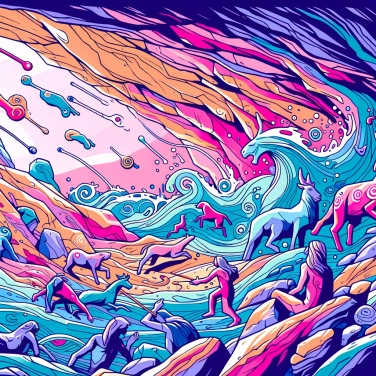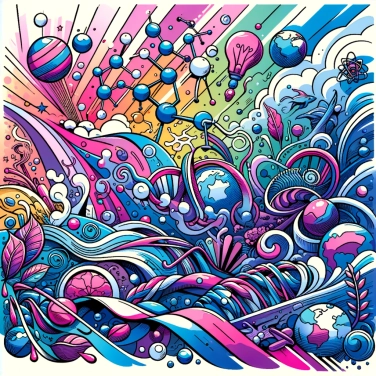The cave paintings are sometimes well preserved in caves due to the absence of direct light, temperature and humidity variations, which helps limit degradation caused by light and other environmental elements.

In a cave, the climate plays a crucial role in the preservation of cave paintings. Caves offer a stable environment in terms of temperature and humidity. The temperature is generally cooler inside caves compared to the outside. This limited temperature variation helps protect the paintings from extreme fluctuations that could damage them.
The humidity in caves is also maintained at a relatively constant level. This is essential to prevent the formation of mold or bacteria that could deteriorate the paintings. Additionally, moderate humidity can help prevent the cracking of pigments used in cave paintings.
Furthermore, air circulation in caves is often limited, reducing the chances of paintings being exposed to airborne particles that could damage them. This calm atmosphere also helps maintain the paintings in good condition by protecting them from external elements.
The stable climate inside caves creates an environment conducive to the preservation of cave paintings, allowing these ancient artistic testimonies to survive for millennia.
Rock paintings dating back thousands of years are often made from locally available natural materials. Prehistoric artists used mineral pigments such as iron oxide to achieve red, yellow, and brown colors, charcoal for black, kaolin for white, and colored earth for other shades. To bind these pigments, they used organic binders such as animal fat, blood, or plant resin. These materials were often mixed with water to form a paste that was easy to apply to cave walls. The composition of these paintings varied depending on the resources available in the local environment of each site.
Ancient rock paintings are often well preserved due to the absence of direct light in caves. This lack of light helps protect prehistoric artworks from degradation caused by sunlight, which can lead to fading and deterioration of the pigments used. In the absence of direct light, the colors of rock paintings can retain their brightness and intensity for thousands of years.
The cave paintings dating back thousands of years are well preserved in some caves because of their protection against external elements. This protection is a key factor in preserving these prehistoric works of art. Caves provide natural shelter against weather conditions such as rain, snow, wind, and direct sunlight, which could damage the paintings.
The structure of the cave rock acts as a physical barrier that protects the paintings from the harmful effects of moisture and temperature changes. Additionally, caves provide a stable and constant atmosphere in terms of temperature and humidity, which helps preserve the pigments used in cave paintings.
The lack of direct contact with external air also reduces the risk of contamination by biological agents such as bacteria, fungi, or lichens, which could alter the paintings. This isolation from external elements allows cave paintings to remain preserved for thousands of years, providing scientists and historians with a unique insight into the art and life of ancient societies.
In some caves, transparent calcites have slowly formed over the rock paintings, acting as a natural varnish that effectively protects the pigments from degradation.
Most of the pigments used to create cave paintings come from iron oxide minerals such as hematite, clay, or charcoal, which have proven to be particularly resistant to moisture and chemical degradation.
Yes, some microorganisms such as bacteria or fungi can have a negative effect, causing the development of biofilms on painted surfaces and thus threatening their preservation. However, other microorganisms paradoxically play a protective role by creating a biological film that potentially stabilizes and protects the pigments from further degradation.
Prehistoric artists primarily used natural pigments derived from minerals or organic materials: red and yellow ochre, charcoal (black), chalk, or kaolin (white). These pigments have proven to be particularly durable over time, largely due to the specific conditions found in caves.
Access to certain caves like Lascaux and Altamira is restricted to preserve the fragile paintings. Human presence, particularly through breathing, the introduction of bacteria and fungi, or fluctuations in temperature, can quickly disrupt the stable climatic conditions and lead to irreversible damage to the paintings.
Scientists primarily use carbon-14 dating methods if the artists used pigments derived from organic materials such as charcoal. Other methods, such as uranium-thorium dating or the study of limestone concretions covering certain paintings, also allow for reliable dating.
Among the most famous caves are Chauvet and Lascaux in France, Altamira in Spain, and the Cosquer cave near Marseille. These caves are globally recognized for the exceptional preservation of their rock paintings dating back thousands of years.

No one has answered this quiz yet, be the first!' :-)
Question 1/5